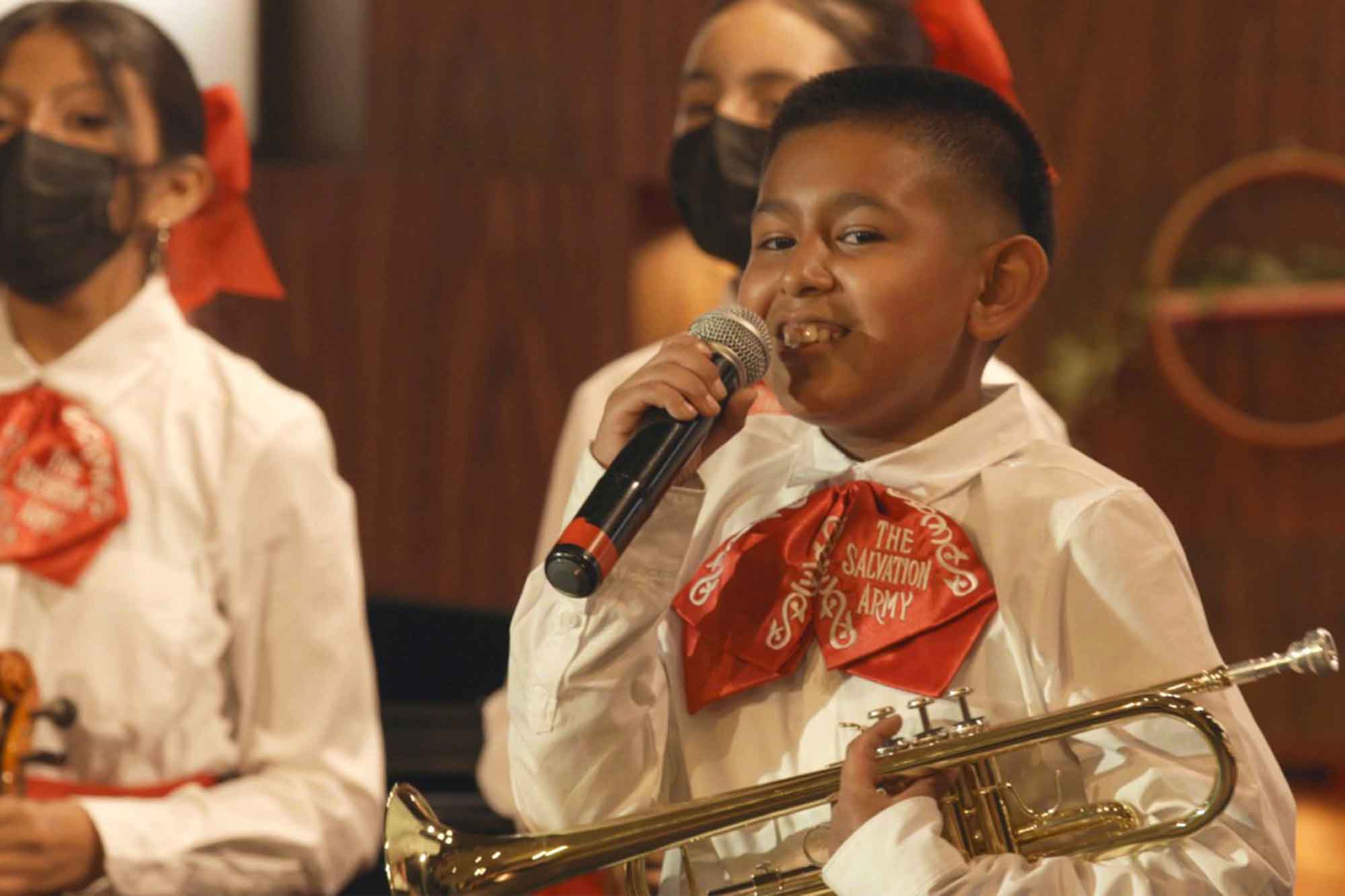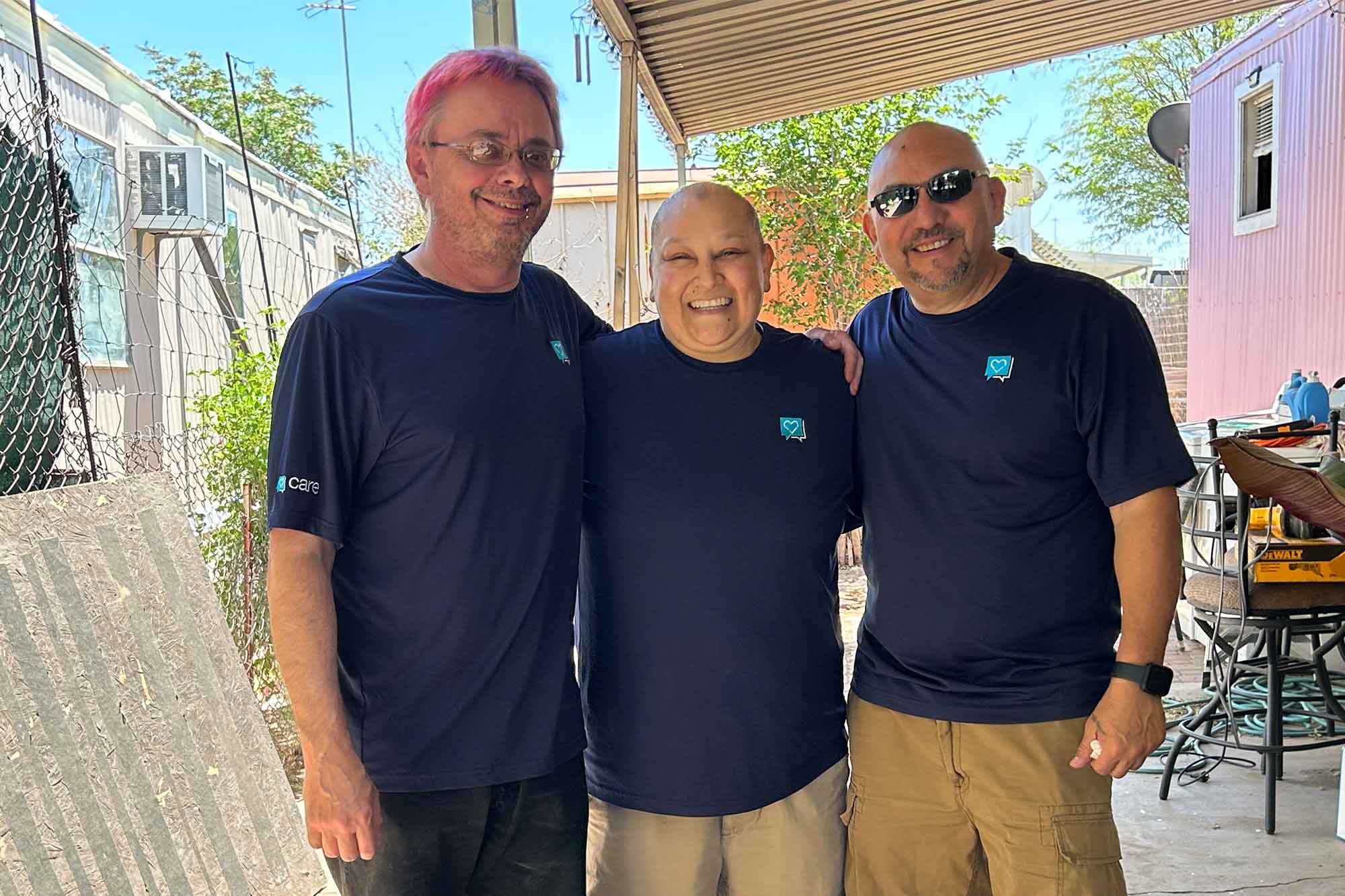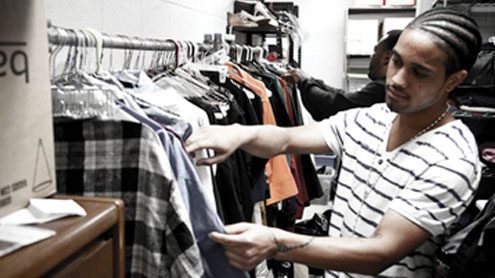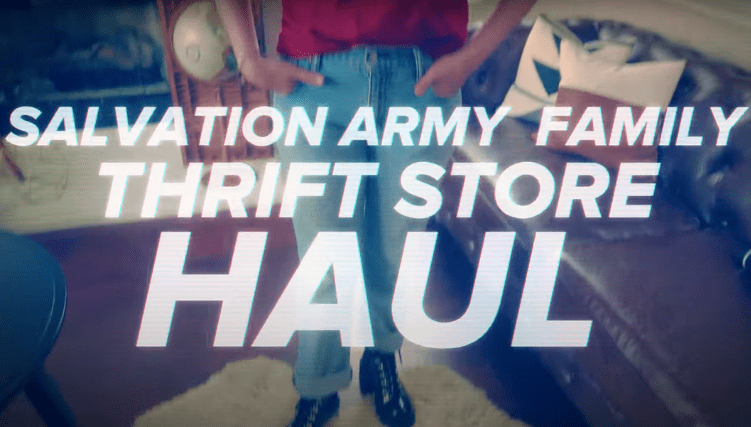Listen to this article
Listen to this article
Loading
Play
Pause
Options
0:00
-:--
1x
Playback Speed- 0.5
- 0.6
- 0.7
- 0.8
- 0.9
- 1
- 1.1
- 1.2
- 1.3
- 1.5
- 2
Audio Language
- English
- French
- German
- Italian
- Spanish
Open text
mariachi lessons in los angeles inspire kids to embrace culture and faith. music brings a powerful depth to life. it allows people to express emotions, experiences and hopes. cultures and sub-cultures tell the stories of their experiences, preserving the past through songs passed down through generations. rayos del sol is a mariachi education program that not only teaches students how to express themselves musically, but reconnects them to the music, culture and language of their heritage. reflecting the diverse community surroundingthe salvation army los angeles red shield,the program attracts many second and third generation latin-american students. the appreciation the students gain for the music and language bridges generational gaps between family members who do not speak the same language. watch this video and experience the beauty and depth students at the salvation army red shield experience when learning mariachi. below is a transcript of the video, edited for readability. ***. students: this is the vihuela; this is the violin; this is the guitaron; this is the guitar; this is the trumpet. nathan: the funny thing is the only reason i chose a trumpet was because it was shiny. anthony moreno: in l.a., there is a high demand for mariachi music. mariachi music is not just in mexico, it’s respected everywhere. lt. angel amezquita: mariachi rayos del sol is a mariachi education program here at the salvation army l.a. red shield community center. the kids are able to come here to the center and they’re able to learn mariachi music, mariachi history. they learn music theory, they learn whichever instrument they choose. they learn how to sing. so it’s really a multifaceted music program. the mariachi program is a place where we can create a safe environment for the kids to express themselves in a musical way. experience is not required. if they just love music and they want to learn a little bit more about the culture, that’s all they need, to come with that type of attitude. lt. angel amezquita: what’s interesting about the program is, it does attract a lot of the latino community. however, most of the kids come in not speaking so much spanish at home. when they’re in an environment where it’s supported– you know, “you need to learn the lyrics. this is what it means. this is how you pronounce it,”– it kind of encourages the kids to start using more spanish at home, connecting with their parents in that specific way. maricruz hernandez: one benefit that comes with learning mariachi music is definitely language. because i’ve learned some new spanish words, they tell us the definition, they help us pronounce the lyrics. definitely, when i go to mexico, i’ve noticed that my spanish is way better. and sometimes i stumble upon a word and i’m like, “wait, i’ve seen this in this music piece.”. lt. angel amezquita: creating that environment where the kids are learning stories and poetry because that’s what songs are. they now have a talking point at home, right? “what does this mean? who’s this singer?”. norma hernandez: you grow up listening to these songs with grandparents, with parents, and to have the opportunity to sing them together; there are times when we’re in the car and we put the songs on the bluetooth and we drive around singing them. we have a really good time, right? it’s a moment where we draw closer as a family. maricruz hernandez: it’s really nice that we have another thing to talk about and to bond over. and it’s not only with my mom, it’s the rest of my family, sometimes even relatives from mexico. i’m like, “oh, i’m singing this song.” and then they’ll tell me stories about that song and their experiences, and it’s really cool. anthony moreno: the families, they migrate away from their country, so something that lets them stay connected to their culture is music. norma hernandez: for latino parents, it’s wonderful because it brings along a part of us. lorena valencia: i’m half mexicana, so i’m very happy that she’s chosen to play music that’s so near and dear to my heart. lina san valencia: one of my favorite songs is “canta, canta” (“sing, sing”). it’s a happy song with all these fun notes and parts. maricruz hernandez: you can tell, like when a mariachi sings a piece of music, it’s very distinct, it’s not just singing, but it’s also the emotion and expression that goes into the song. lt. cassandra amezquita: when people sing or even use their breath to blow into their instruments. it requires so much of that soul. and i think allowing kids a place where they can feel that emotion and that soul, that’s a very powerful thing. lt. angel amezquita: we have given the people opportunities to go to a performance, kind of like, “hey, we’re going to have an event, mother’s day event. let’s have the mariachi perform.” and when they’re here, they see, “hey, what is this? oh, this is also a church. we learn about god here. like, okay, i’ll come next sunday.”. alejandra reyes: the church knows the community’s needs and it takes its time to see what works with the children, what works with the teens, what works with the adults so that we could just encourage others to come in. lt. cassandra amezquita: hosting a bilingual service is more than just language translation. it’s all about making people feel comfortable in their native language so that they can feel like you care to see who they are and to give them that attention. angelina gonzales: she went to a salvation army camp once and came back with so many questions that i had zero answers to. so i was like, you know what? let’s find a place where we can get you those answers. lila doesn’t speak spanish, so if the message was all in spanish, she would lose out on a lot because it wasn’t in the appropriate language for her. lt. cassandra amezquita: there are adults who feel most comfortable in spanish. there are youth that feel most comfortable in english, and we want to really allow them the space to get to experience both. xiomara reyes: for us as parents it is a blessing that we can worship god together, in one place. it is a blessing to have an entire family attend one church. alejandra reyes: nathan actually has sunday breakfast with grandpa and then they come to church together. jose martinez: when worship songs are translated from english to spanish, i feel a greater impact from the song. why? because i can express myself with confidence in my native tongue. now i know what i am saying is to worship god and i sing it without reservation, with joy and confidence. mariacruz valentin martinez: if we didn’t understand completely, we wouldn’t know exactly what emotion to feel or to express. alejandra reyes: spanish worship it just brings me back to when i was a little girl. i love that i can have my parents if they’re not here, or i could think about other family members that are not here. and i feel, in a way, connected through spanish music. lorena valencia: there’s one song in particular that’s very special to me that makes me choke up every time i hear it: “amor eterno” (“eternal love”). it used to make me cry because of the lyrics and the story it’s telling, but now i get choked up because my little girl is able to perform it. alejandra reyes: and seeing my son sing in spanish, as a parent, i’m proud. norma hernandez: when you hear mariachi, it really makes your heart race as you listen. and to turn and see your child performing, it’s very emotional. jose martinez: it’s beautiful to follow god, it doesn’t matter the language. what’s important is knowing that god loves us and understands us regardless of the language we speak. alejandra reyes: being able to have the mariachi program and church in the same place makes it even more special. i just hope the legacy keeps going, and one day i’ll see my grandchildren run through here speaking both languages, and singing coritos. that’s honestly, i guess my dream. do good:. see more videos like this in ourvideo feed. are you a do gooder, someone who cares about bringing goodness into the life of your family and community? subscribe tothe do gooders podcast to be inspired by those doing good and find tangible tips for simple actions you can take today. did you know the salvation army served more than 23 million americans last year fighting hunger, homelessness, substance abuse and more—all in a fight for good? where can you help?take our quizto find your cause and learn how you can join in today. download video
Open context player
Close context player
Plays:-Audio plays count
mariachi lessons in los angeles inspire kids to embrace culture and faith. music brings a powerful depth to life. it allows people to express emotions, experiences and hopes. cultures and sub-cultures tell the stories of their experiences, preserving the past through songs passed down through generations. rayos del sol is a mariachi education program that not only teaches students how to express themselves musically, but reconnects them to the music, culture and language of their heritage. reflecting the diverse community surroundingthe salvation army los angeles red shield,the program attracts many second and third generation latin-american students. the appreciation the students gain for the music and language bridges generational gaps between family members who do not speak the same language. watch this video and experience the beauty and depth students at the salvation army red shield experience when learning mariachi. below is a transcript of the video, edited for readability. ***. students: this is the vihuela; this is the violin; this is the guitaron; this is the guitar; this is the trumpet. nathan: the funny thing is the only reason i chose a trumpet was because it was shiny. anthony moreno: in l.a., there is a high demand for mariachi music. mariachi music is not just in mexico, it’s respected everywhere. lt. angel amezquita: mariachi rayos del sol is a mariachi education program here at the salvation army l.a. red shield community center. the kids are able to come here to the center and they’re able to learn mariachi music, mariachi history. they learn music theory, they learn whichever instrument they choose. they learn how to sing. so it’s really a multifaceted music program. the mariachi program is a place where we can create a safe environment for the kids to express themselves in a musical way. experience is not required. if they just love music and they want to learn a little bit more about the culture, that’s all they need, to come with that type of attitude. lt. angel amezquita: what’s interesting about the program is, it does attract a lot of the latino community. however, most of the kids come in not speaking so much spanish at home. when they’re in an environment where it’s supported– you know, “you need to learn the lyrics. this is what it means. this is how you pronounce it,”– it kind of encourages the kids to start using more spanish at home, connecting with their parents in that specific way. maricruz hernandez: one benefit that comes with learning mariachi music is definitely language. because i’ve learned some new spanish words, they tell us the definition, they help us pronounce the lyrics. definitely, when i go to mexico, i’ve noticed that my spanish is way better. and sometimes i stumble upon a word and i’m like, “wait, i’ve seen this in this music piece.”. lt. angel amezquita: creating that environment where the kids are learning stories and poetry because that’s what songs are. they now have a talking point at home, right? “what does this mean? who’s this singer?”. norma hernandez: you grow up listening to these songs with grandparents, with parents, and to have the opportunity to sing them together; there are times when we’re in the car and we put the songs on the bluetooth and we drive around singing them. we have a really good time, right? it’s a moment where we draw closer as a family. maricruz hernandez: it’s really nice that we have another thing to talk about and to bond over. and it’s not only with my mom, it’s the rest of my family, sometimes even relatives from mexico. i’m like, “oh, i’m singing this song.” and then they’ll tell me stories about that song and their experiences, and it’s really cool. anthony moreno: the families, they migrate away from their country, so something that lets them stay connected to their culture is music. norma hernandez: for latino parents, it’s wonderful because it brings along a part of us. lorena valencia: i’m half mexicana, so i’m very happy that she’s chosen to play music that’s so near and dear to my heart. lina san valencia: one of my favorite songs is “canta, canta” (“sing, sing”). it’s a happy song with all these fun notes and parts. maricruz hernandez: you can tell, like when a mariachi sings a piece of music, it’s very distinct, it’s not just singing, but it’s also the emotion and expression that goes into the song. lt. cassandra amezquita: when people sing or even use their breath to blow into their instruments. it requires so much of that soul. and i think allowing kids a place where they can feel that emotion and that soul, that’s a very powerful thing. lt. angel amezquita: we have given the people opportunities to go to a performance, kind of like, “hey, we’re going to have an event, mother’s day event. let’s have the mariachi perform.” and when they’re here, they see, “hey, what is this? oh, this is also a church. we learn about god here. like, okay, i’ll come next sunday.”. alejandra reyes: the church knows the community’s needs and it takes its time to see what works with the children, what works with the teens, what works with the adults so that we could just encourage others to come in. lt. cassandra amezquita: hosting a bilingual service is more than just language translation. it’s all about making people feel comfortable in their native language so that they can feel like you care to see who they are and to give them that attention. angelina gonzales: she went to a salvation army camp once and came back with so many questions that i had zero answers to. so i was like, you know what? let’s find a place where we can get you those answers. lila doesn’t speak spanish, so if the message was all in spanish, she would lose out on a lot because it wasn’t in the appropriate language for her. lt. cassandra amezquita: there are adults who feel most comfortable in spanish. there are youth that feel most comfortable in english, and we want to really allow them the space to get to experience both. xiomara reyes: for us as parents it is a blessing that we can worship god together, in one place. it is a blessing to have an entire family attend one church. alejandra reyes: nathan actually has sunday breakfast with grandpa and then they come to church together. jose martinez: when worship songs are translated from english to spanish, i feel a greater impact from the song. why? because i can express myself with confidence in my native tongue. now i know what i am saying is to worship god and i sing it without reservation, with joy and confidence. mariacruz valentin martinez: if we didn’t understand completely, we wouldn’t know exactly what emotion to feel or to express. alejandra reyes: spanish worship it just brings me back to when i was a little girl. i love that i can have my parents if they’re not here, or i could think about other family members that are not here. and i feel, in a way, connected through spanish music. lorena valencia: there’s one song in particular that’s very special to me that makes me choke up every time i hear it: “amor eterno” (“eternal love”). it used to make me cry because of the lyrics and the story it’s telling, but now i get choked up because my little girl is able to perform it. alejandra reyes: and seeing my son sing in spanish, as a parent, i’m proud. norma hernandez: when you hear mariachi, it really makes your heart race as you listen. and to turn and see your child performing, it’s very emotional. jose martinez: it’s beautiful to follow god, it doesn’t matter the language. what’s important is knowing that god loves us and understands us regardless of the language we speak. alejandra reyes: being able to have the mariachi program and church in the same place makes it even more special. i just hope the legacy keeps going, and one day i’ll see my grandchildren run through here speaking both languages, and singing coritos. that’s honestly, i guess my dream. do good:. see more videos like this in ourvideo feed. are you a do gooder, someone who cares about bringing goodness into the life of your family and community? subscribe tothe do gooders podcast to be inspired by those doing good and find tangible tips for simple actions you can take today. did you know the salvation army served more than 23 million americans last year fighting hunger, homelessness, substance abuse and more—all in a fight for good? where can you help?take our quizto find your cause and learn how you can join in today. download video
Listen to this article

















